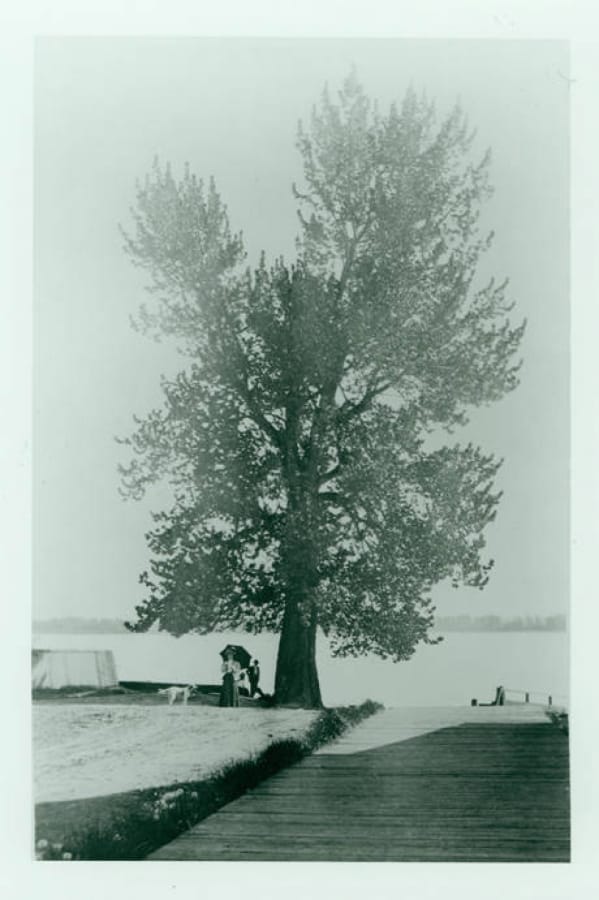Amos Short knifed his initials into a balm of Gilead tree bordering the Columbia River in 1846 to mark the eastern corner of his donation land claim. By doing so, he was practicing the established surveying technique of labeling trees as boundaries between claims. Often surveyors picked trees for their age or prominence.
Although Short’s tree started out like many others in the area, his mark scratched into its bark elevated it to the witness of one corner of his claim and the line between his property and the Hudson’s Bay Company’s. More than likely, Short carved his initials into several more trees, defining each turn of his claim in what’s now downtown Vancouver. In selecting his tree, Short guessed it would endure as long as his claim. After his death by drowning, his tree would become a survey point for future claims and silently watch the area emerge from a Hudson’s Bay Trading Post into a military barracks and a town.
Short’s witness tree endured for a time. But gradually, a growing town encroached on much of his claim and the Columbia River bit away at the bank by the tree. Steadily, his tree tilted dangerously toward the river. In May 1909, high schoolers collected money to save the tottering tree. Too late, the city enlisted its engineer, who proposed encircling pilings just beyond the crumbling bank in the river then filling in the space between.
A month later, before any work started, one of the oldest Clark County landmarks toppled. Rumors suggested mischievous youths, not nature. The historic tree was cut up, and many people grabbed up chunks for souvenirs. Then in 1913, the city declared the land the tree once shaded a park. Today, where the Witness Tree stood rests an engraved brass plate used as an anchor for land surveys still.
Martin Middlewood is editor of the Clark County Historical Society Annual. Reach him at ClarkCoHist@gmail.com.



